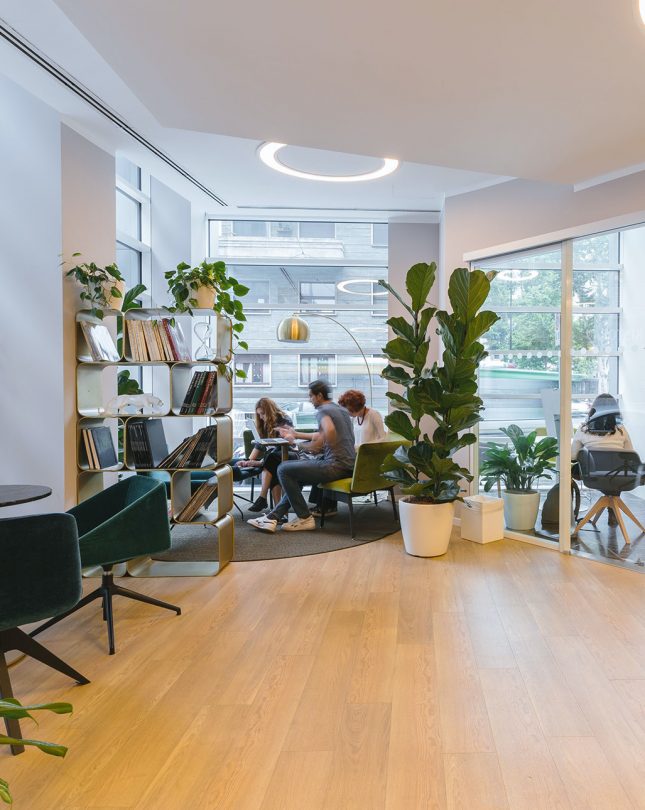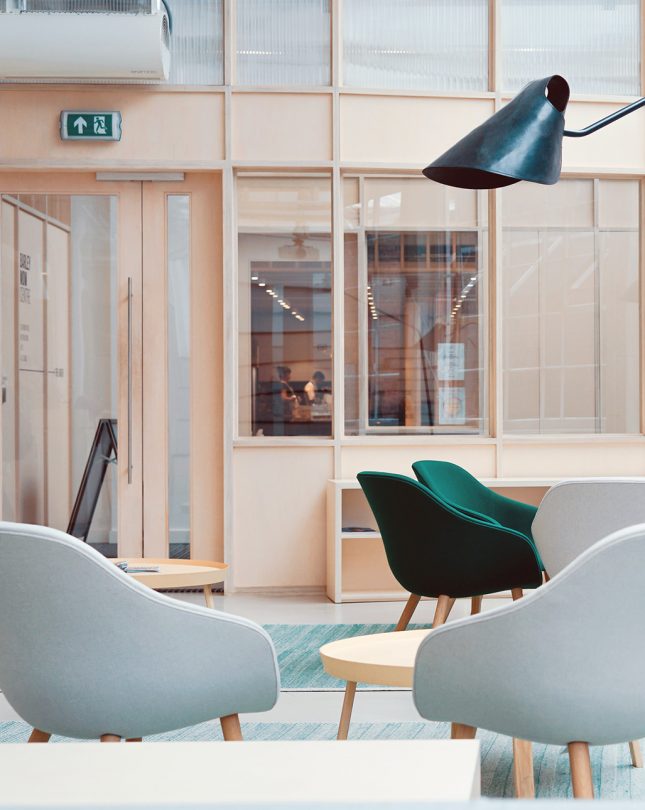Our latest news and views English
Underpinned by our Scandinavian design heritage, we bring you regular stories about architecture and interiors, exploring natural materials, acoustics, and the creation of safe and harmonious environments.
Stockholm-based Gatun Arkitekter are known for their innovative approach to design, with a human-focused mindset permeating everything they do. They work on a variety of projects – from commercial to residential, public We take a closer look at how inclusivity in design is evolving, and how employers and designers are creating neurodiverse workspaces.

While architects and designers have to address inclusive physical access to buildings, what about other hurdles to overcome that may be more hidden and nuanced? Conditions such as autism, dyslexia and dyspraxia affect the awareness of a space, with varying memory processes and perceptions of sound, time and distance. And that needs due consideration too!
There’s work to do in the office environment, particularly as the UK’s Office for National Statistics shows that just 22% of autistic adults are in any kind of employment. Global design firm HOK has looked at the neurodiverse workspace in a recent report. Acoustics play their part here. “Where neurotypical employees may find ambient noise — or the lack of it — counterproductive, employees who are especially sensitive or prone to distraction, such as those with autism or ADHD, can find it downright disabling,” it says. HOK recommend “a comprehensive — and therefore more inclusive — approach to acoustic design” including a variety of auditory settings, acoustic separation and the inclusion of sound masking or white noise systems.
The British Broadcasting Corporation (BBC) is one employer that has recognised a need to alter the way it operates to meet differing neurological makeups. Its neurodiversity arm, BBC Cape created a ‘cognitive accessibility toolkit’ for its Cardiff project, BBC Cymru Wales New Broadcasting House, which staff moved into in 2019.
This particular project was the work of ID:SR, architectural practice’s Sheppard Robson’s interior design group which is headed up by Helen Berresford. She talks about greater awareness of neurodiverse needs in the first place and working with experts in the field from the very outset. “This heightened sensitivity as to how different people see the world means that we must carefully consider how colours are used, particularly contrasting tones that affect some people’s concentration. This feeds into a project’s graphics and wayfinding strategy, and challenges us to think more creatively not just about colour but about how maps and symbols are used.”
Alan Bainbridge, director of workplace and corporate real estate at the BBC, adds “Perhaps one of the simplest and most impactful changes we made was with lighting. Flickering lights are commonplace in office environments and can be a major hindrance. Non-flickering LED lamps and a drop in lighting levels … evoke a more comfortable and domestic feel.”


Other enlightened employers include global software giant SAP which has had an ‘Autism at Work’ program. Meanwhile, Universal Music UK launched its Creative Differences handbook in 2019, sharing the experiences of people with facets of neurodiversity and how they and their neurotypical colleagues can work effectively side by side. Among the report’s recommendations were providing a fixed workspace as opposed to hotdesking to provide a consistent working area, clearly defining areas for working and areas for socialising, and providing a private space to go to if the individual is feeling overwhelmed.
As designers and architects increasingly address neurodiversity within their approach to inclusive design, there is a growing understanding that often minor changes to acoustics and visual aspects, and the provision of calm, private spaces, can be transformational.